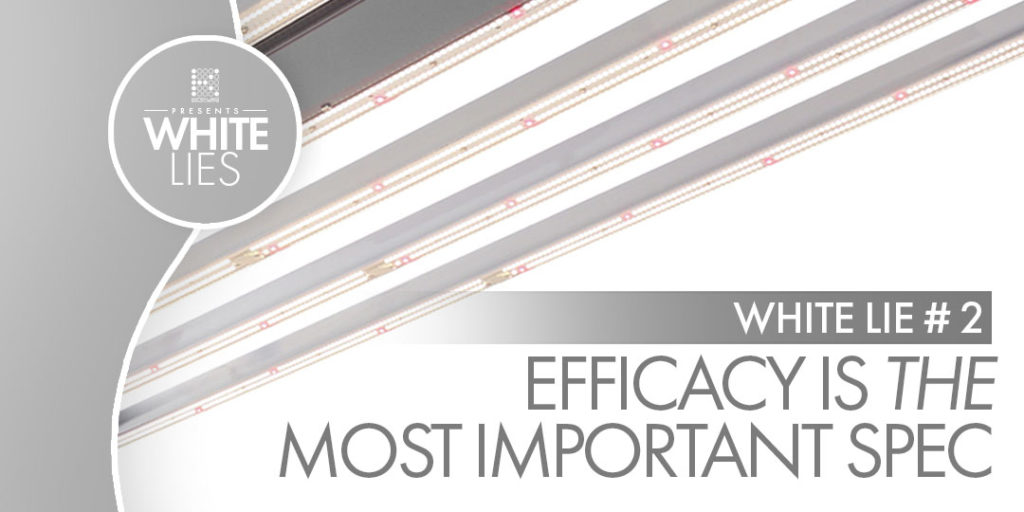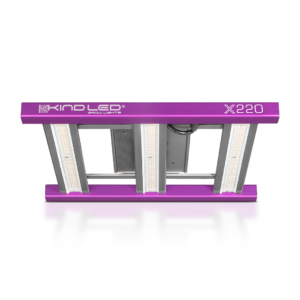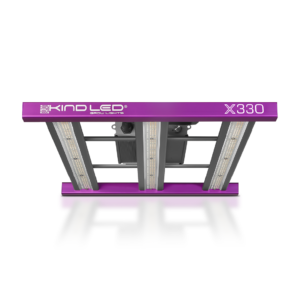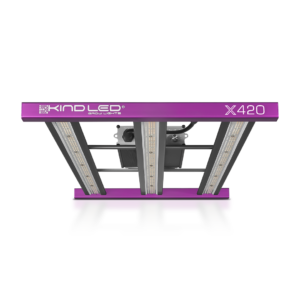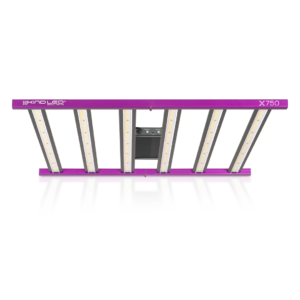Welcome to a new blog series from Grow Strong Industries where we address some of the misinformation currently being spread by the white light LED manufacturers so prolific in the horticultural lighting industry. If you haven’t yet had the opportunity, please read our first post in this series.
White Lie #2: Efficacy is the single most important spec of a grow light
As we discussed in last week’s post, which we strongly suggest you read if you haven’t yet had an opportunity, white light LED manufacturers have turned efficacy values into the new hotness, claiming that above all, efficacy is the most important spec when it comes to choosing a grow light.
As a reminder, efficacy is a measurement of how effective a grow light is at converting electrical energy into photosynthetically active radiation. This is calculated by taking the PPF value and dividing it by the measurement of wattage (Joules per second). Therefore, efficacy measures exactly how much usable light a fixture produces every second per watt used. (µmol/J)
Focusing on an efficacy value without context is completely misleading. It’s like focusing on the 0-60 time of a sports car. While it’s impressive that the car can go 0-60 in 4 seconds flat, before buying one, you might want to know if it can also go around a corner without sending you into a wall and exploding.
White light LED companies focus on efficacy values because white light LED diodes generally have better efficacy than other diodes. And since white light LED diodes are used in every industry imaginable and readily available, it stands to reason that manufacturers would like to use these diodes. After all, using readily available diodes is quite a bit simpler and less expensive than manufacturing new ones with a targeted spectrum that might be better for your plants. So white light LED manufacturers use these readily available diodes and throw in some far-red diodes to make the lights perform better during the flowering cycle.
As we covered last week, white light includes an abundance of green and yellow light which plants can only use in limited quantities, and much of that light winds up reflected from the plant’s surface and turned into heat energy. This makes white light LEDs pretty inefficient. But by focusing on the efficacy values of those same white diodes, they’ve turned a cost-saving business decision into a marketing tool.
When judging a grow light, you can’t point to a single feature as being the most important. There are several factors that influence the viability of a grow light, with the spectrum and the intensity of that spectrum being at the top of the list. Any company that is directing you towards a single number on a white sheet is trying to distract you from other deficient components of their panel. Kind LED Grow Lights has carefully crafted a perfect-blend spectrum for their grow lights that ensures no energy is wasted on parts of the spectrum plants will not use to grow and thrive.
